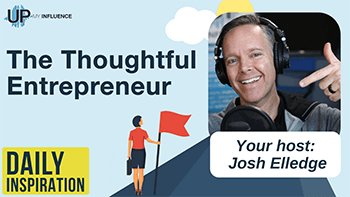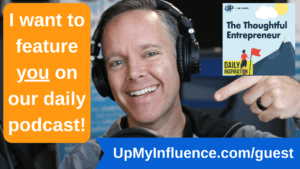THE THOUGHTFUL ENTREPRENEUR PODCAST
In this episode of the Thoughtful Entrepreneur, your host Josh Elledge speaks with the CEO & Founder of Funnelytics, Mikael Dia.
Mikael Dia, the CEO of Funnelytics, shared that 65% of people are visual learners. This statistic underscores the importance of their platform, which caters to this majority by merging visual cues with complex data, enabling businesses to strategize with clarity and precision.
Mikael drew an analogy to a local store, where the owner guides customers through a journey rather than leaving conversions to chance. This approach requires a deep understanding of the customer's personal touchpoints, fears, skepticism, and problems.
Mikael delved into the role of empathy in marketing. Focusing on successful customer outcomes, not just conversions, is crucial. By putting ourselves in our customers' shoes, we can create more meaningful and effective marketing strategies that resonate personally.
Mikael explained how Funnelytics is a powerful communication tool. During sales calls, users can visually explain strategies and data to potential clients, engaging them and building trust. Moreover, the platform's real-time analytics enable businesses to track the effectiveness of their strategies and make data-driven decisions.
To harness the full potential of Funnelytics, it's essential to have a designated operator within your organization. This person should orchestrate customer journeys and understand the tool's analytics to drive growth. Identifying the right individual for this role is critical to leveraging the platform's capabilities.
Key Points from the Episode:
- Importance of visualizing marketing funnels
- Practical applications of Funnelytics for understanding and optimizing customer experiences
- Significance of using visual tools for communication
- Role of empathy in customer interactions
- Need for measuring and analyzing data to improve business strategies
- Practical applications of Funnelytics for sales calls and communication within organizations
- Orchestrating a journey to convert a stranger into a customer
- Consideration of personal touchpoints, fears, skepticism, and problems of potential customers
- Value of visual communication in engaging and building trust with clients
About Mikael Dia:
Mikael Dia is a digital marketing maestro and entrepreneur, renowned for founding Funnelytics—a pivotal tool for marketers to enhance online traffic and profitability. His expertise has propelled multiple ventures into seven-figure successes, demonstrating a keen ability to decode complex marketing data for accelerated business growth.
Mikael's journey includes catapulting his nutrition company, IIFYM, from modest monthly earnings to impressive daily revenues. He swiftly elevates his marketing agency, White Coat Digital, past the million-dollar revenue mark within 18 months.
With Funnelytics, he has attracted over 50,000 users and generated $1.4 million in just 10 months. Based in Toronto, Canada, Mikael balances his professional achievements with family life, sharing his home with his wife and young daughter.
About Funnelyltics:
Funnelytics is a groundbreaking marketing analytics tool designed to map and monitor sales and marketing endeavors visually. It introduces a collaborative canvas feature, centralizing essential data for teams to efficiently identify and address bottlenecks, optimizing traffic flow and campaign effectiveness.
This innovation meets a significant demand within the marketing sector for an analytics platform that combines intuitiveness with powerful functionality. The enthusiasm and positive feedback from the industry underscore Funnelytics' trajectory towards becoming the premier solution in marketing analytics.
Its user-friendly interface and comprehensive insights cater to marketers and business owners, facilitating informed decision-making and strategic planning. Funnelytics is shaping up to be the most user-friendly and insightful marketing analytics tool in the market, reflecting a deep understanding of marketers' needs and challenges.
Links Mentioned in this Episode:
Want to learn more? Check out Funnelytics website at
Check out Funnelytics on LinkedIn at
https://www.linkedin.com/company/funnelytics-io/
Check out Mikael Dia on LinkedIn at
https://www.linkedin.com/in/mikaeldia/
Check out Mikael Dia on Facebook at
https://www.facebook.com/mikael.dia/
More from UpMyInfluence:
We are actively booking guests for our The Thoughtful Entrepreneur. Schedule HERE.
Are you a 6-figure consultant? I’ve got high-level intros for you. Learn more here.
What is your #1 Lead Generation BLOCKER? Take my free quiz here.
Want to learn more about all the podcasts managed by UpMyInfluence? Opt in here.

